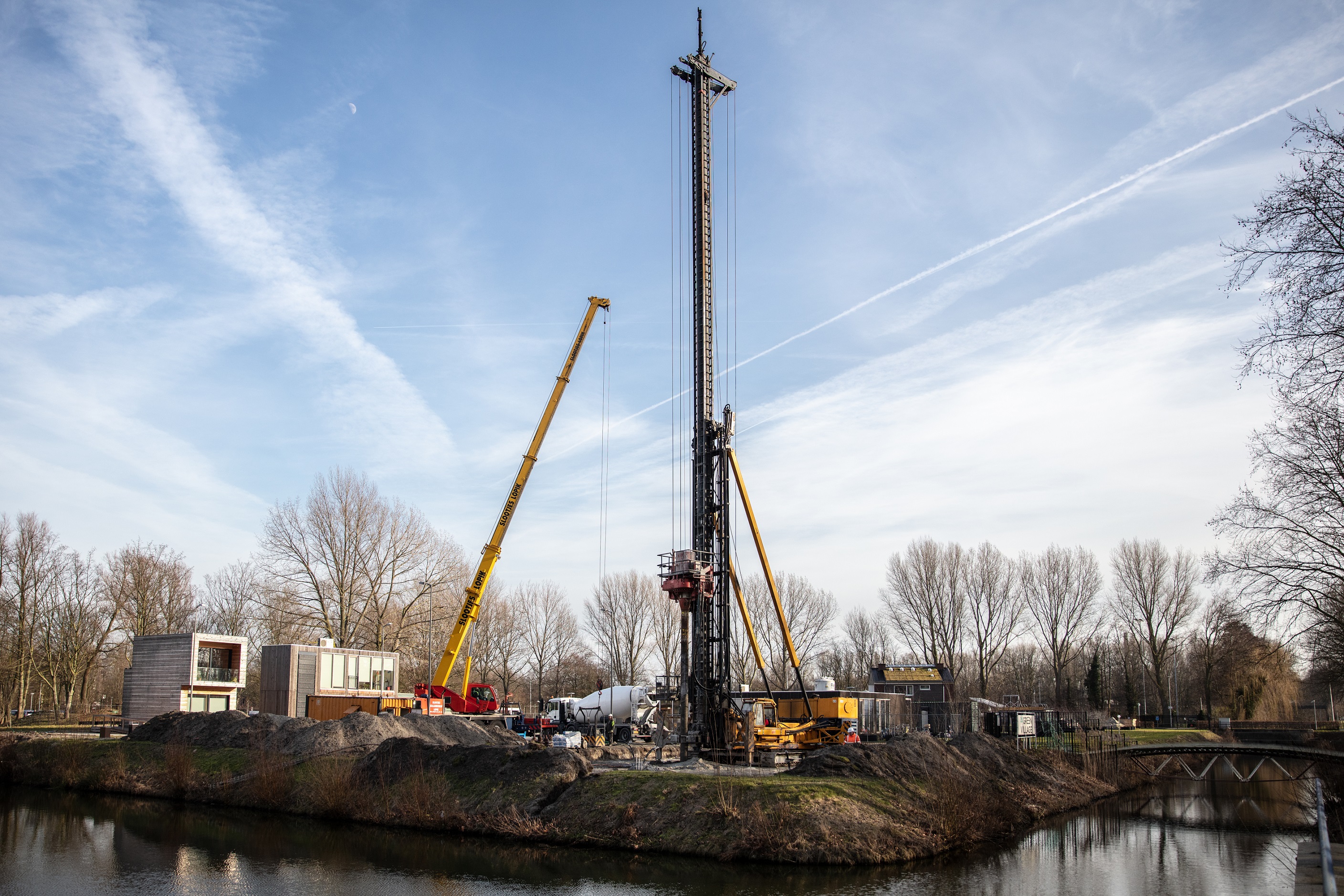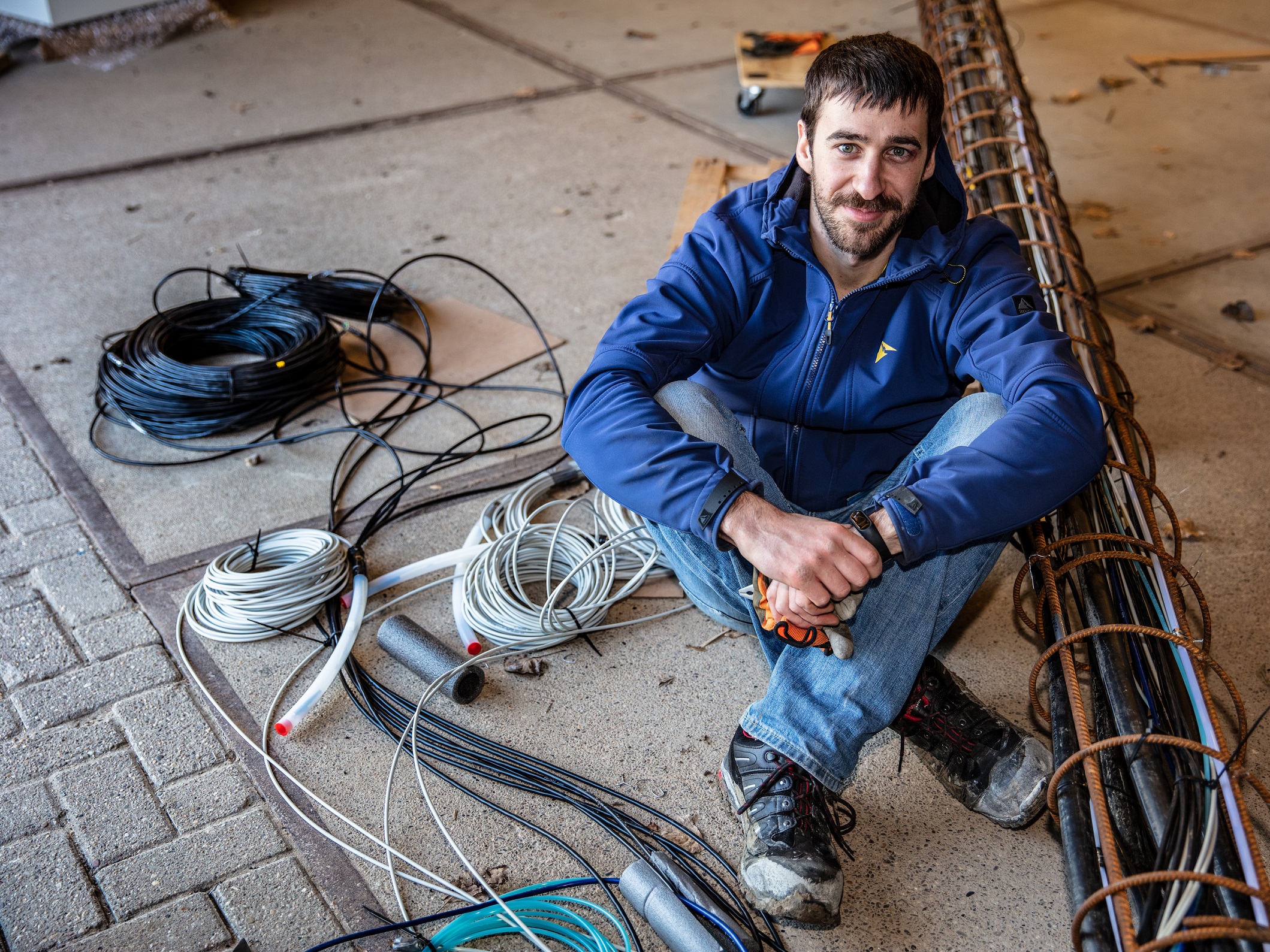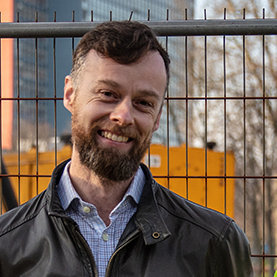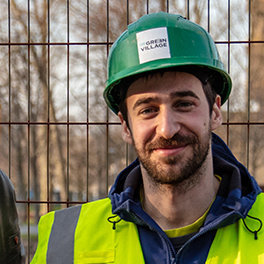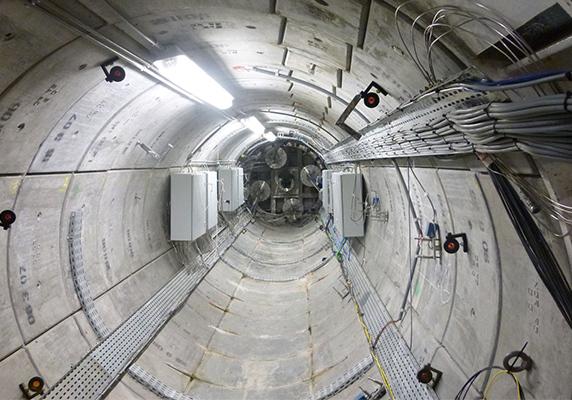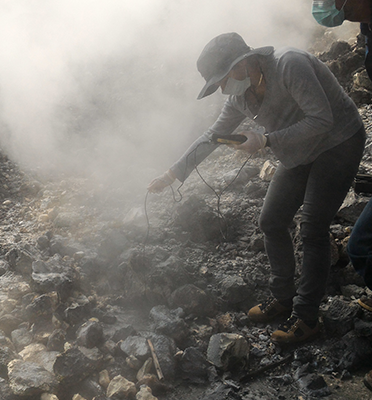Heating our homes is warming up the Earth too. Associate Professor Phil Vardon and PhD candidate Ivaylo Pantev want to warm or cool buildings through their pile foundations, by using the natural temperature of the soil. If done well, this can help residents to save energy, money and problems for generations to come.
Dig an 18-meters-deep hole. Insert the steel caging. Pour concrete. Repeat. Suited up with helmets, jackets and safety shoes, Vardon and Pantev supervise the installation operations. For the first time ever, energy pile foundations with detailed instrumentation are built in the Netherlands within Delft’s Green Village, to test and speed up their use on the market. “The Netherlands is a country where a broad energy transition is about to begin,” says Pantev. “We want the energy piles to be a driving force of this change.” Space heating and cooling were responsible for 50% of the European Annual energy consumption alone in 2018. Funding research to tackle such an issue and finding alternatives is today essential for engineers. “We aim to standardise our technology for piles up to 30-meters-deep and help industries build more eco-friendly constructions.”
Walking an unbeaten road
Energy piles have a twofold task: losing or gaining heat from the ground and structurally supporting the building. Dutch soft soil is a challenging arena as engineers must account for additional effects during the design. This reason made Dutch construction companies hesitant towards this technology. “Heating up a structure makes it expand; conversely – cooling causes contraction,” says Pantev. “It is an additional long-term load that makes the energy piles’ design more challenging. Soft soil increases complexity and, if not well-approached, it opens the door to unwanted structural deformations.” Dutch construction companies have a vast knowledge in building foundation piles, but the energy piles are less well-understood. Vardon and Pantev’s role is to take them by the hand and show them how they can bring such knowledge to the next greener level. “Energy piles are since years used inside stiff and over-consolidated clay in UK and Switzerland,” says Vardon. “The added required calculations can today be a blockage for implementing such a system, but we are confident that both the Dutch construction industry and society will benefit from it in the coming years.”
Half refrigerator, half roller coaster
To heat or cool their rooms, buildings run water inside heat-exchanger tubes. Energy piles differ from conventional systems by mimicking a roller coaster. Going from the building, into the ground — through the foundation piles — and back into the building, using the constant initial temperature of 12°C at below 5 meters depth in the Dutch soil along with a heat pump. “If you touch behind a fridge, you notice it is warm. That is caused by a heat pump,” says Vardon. “It is a mechanical device which compresses a fluid on one side to warm it up, and then expands it to cool it down on the other”. During winter, the water gains heat from the ground, and a heat-pump inside the building compresses the liquid to further heat it up. During summer instead, the water loses heat to the ground, and the soil’s temperature is enough to cool it down, requiring minimal electricity. “Energy piles can be 20 times less energy consuming in cooling and up to 5 times less in heating than classic heating systems,” says Vardon. “Moreover, using electricity to run the system, rather than gas, allows us to move away from fossil fuel use. Such technology can give a huge hand to reduce buildings’ electric consumptions and carbon emissions from human activities.”
Emerging to a brighter future
By 2021, a minimal carbon footprint to function will be a must if contractors wish to construct new buildings in the Netherlands. New solutions, such as the energy piles, are essentials to meet such target and improve future residents’ lives. “We are in a period where people want to do their part to slow down global warming,” says Vardon. “They are happy to install solar panels, change light bulbs or use public transport, but they have little, if any, power to reduce the energy consumption of their heating systems. Besides that, the Netherlands is a dense country and energy production methods that require space on the surface are difficult. Energy piles are an opportunity to bridge this and lead us to a brighter future”.
Published: February 2019
Associate Professor Phil Vardon and PhD candidate Ivaylo Pantev are not the only contributors to the Energy Piles project. Credits go as well to PhD candidate Ali Golchin and Dr Mehdi Arzanfudi, which are respectively investigating detailed material behaviour and computation modelling. Dr Rafid Al-Khoury is co-leading the project along with Vardon, with Professors Michael Hicks and Bert Sluys contributing. NWO fund the project along with support from FUNDEX, Diana FEA, the Green Village and Deltares. The energy pile test site is located at the Green Village in Delft.

